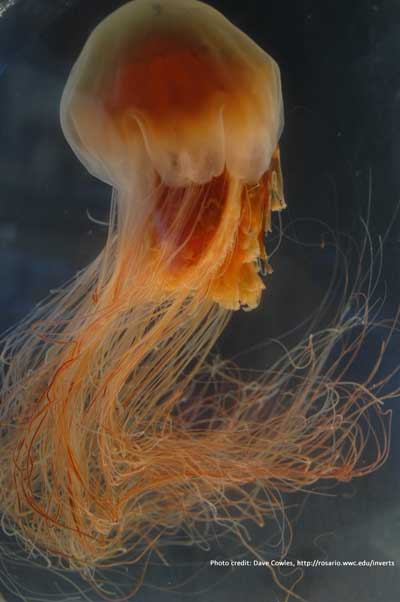In the Sherlock Holmes mystery "The Adventure of the Lion's Mane," the murder weapon is an impressive sea creature. Walking the beach each fall you often find colorful Lion's Mane jellies high and dry. DON'T TOUCH them! The Lion's Mane jelly has a very toxic sting even when stranded. Touch it and your skin will burn and blister.
Red-brown to yellow, 20 inches across with tentacles 7 feet long — this is the largest known jelly in the world. In colder waters its tentacles may grow to over 100 feet, longer than the Blue Whale!! Its name comes from the flowing, reddish tentacles, which in water look like the mane of a lion. Stingers filled with toxins line these tentacles and shoot like little harpoons to stun or kill the jelly's prey.
The Lion's Mane travels with the currents inside Puget Sound and along the outer coast. Although rarely seen south of the Oregon-California border its oceanic range overlaps with leatherback sea turtles, which eat these large jellies. Unfortunately, turtles can mistake floating plastic bags for jellies, which can be fatal. Always dispose of trash properly — never in the water.

